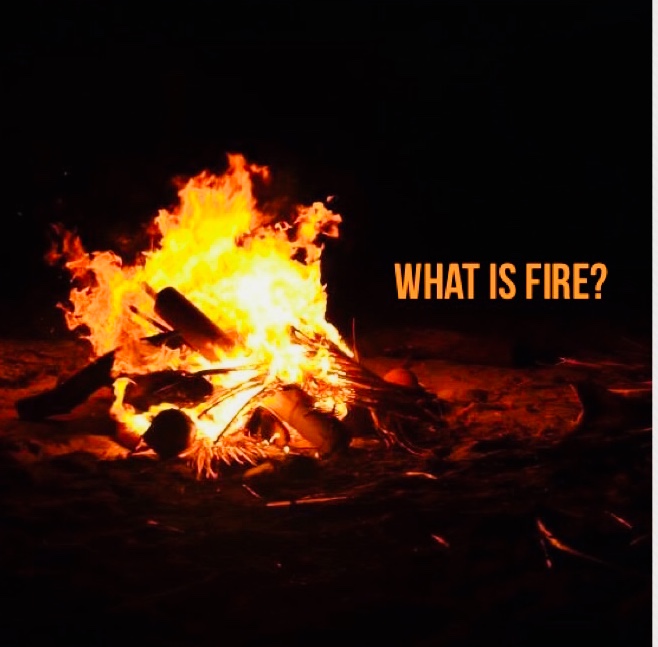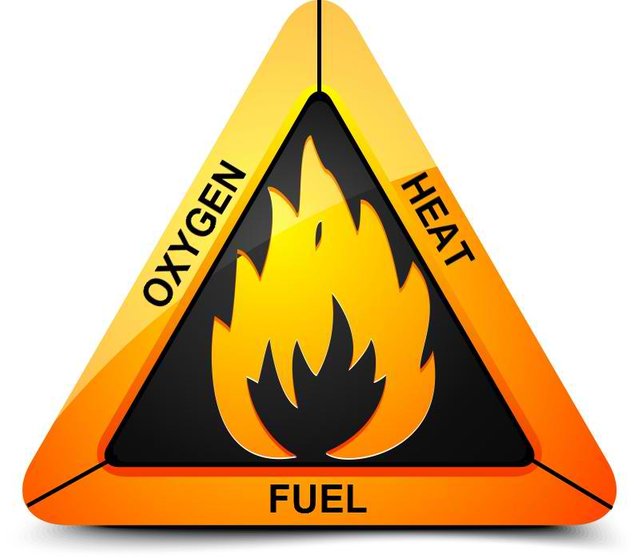
Fire grows, and as it spreads, it creates new fires that spread out and make new fires of their own. - Dan Wells
What is Fire?
Fire is the rapid oxidation of material in chemical process of combustion, which occurs when fuel and oxygen interact in the presence of sufficient heat to cause ignition.
The Fire Triangle
The triangle illustrates the three elements: fuel, oxygen and heat.
Fuel
The word Fuel describes any combustable material, regardless of wethere it is fas, a liquid or a solid.
Oxygen
The right concentration of oxygen is required to sustain combustion.
Heat
Heat is a form of energy termed thermal energy. Sufficient thermal energy must be applied to raise the combustible material to its ignition temperature. Sparks, arcs, flames, friction all release thermal energy.
Classes of Fire
Class A
Describes fires of ordinary combustible materials, such as wood, cloth, paper, rubber and many plastics.
can be extinguished by:- water (red),
- foam (red with a cream band or all cream), and;
- dry powder (red with blue band or all blue) and;
- wet chemical (red with a gold band or all gold)
Class B
Describes fires of flammable liquids and gases. Combustible liquids, petroleum greases, tars, oils, oil-based paints, solvents, lacquers and alcohols, butane, propane and methane are the most common fuels for this class.
can be extinguished by:- foam (red with a cream band or all cream),
- carbon dioxide (red with ablack band or all and;
- dry powder (red with blue band or all blue)
Class C
Describes fires involving energised electrical equipment.
can be extinguished by:- carbon dioxide (red with ablack band or all and;
- dry powder (red with blue band or all blue)
Class D
Describes fire of combustible metals, such as magnesium, titanium, sodium, lithium, and potassium.
can be extinguished by:- dry powder (red with blue band or all blue)
Class K
Describes fire in cooking appliances that involve combustible cooking materials. K class fires commonly occur in commercial kitchens and food preparation facilities that use deep fryers.
can be extinguished by:- wet chemical (red with a gold band or all gold)
You are Fire but don’t cause Fire!
Gracias por leer!❤️
I Appreciate if you can
FOLLOW ME|UPVOTE|RESTEEM
It’s Encouraging.

Good blog you got there..
Downvoting a post can decrease pending rewards and make it less visible. Common reasons:
Submit
Thank you! 🤗
Downvoting a post can decrease pending rewards and make it less visible. Common reasons:
Submit
Are you a firefighter? :D This reminds me of the training we had about fires. We even had fire drill and taught the use of fire extinguishers. Fortunately or unfortunately, I never had the chance yet to apply what I have learned.
Downvoting a post can decrease pending rewards and make it less visible. Common reasons:
Submit
Not a firefighter. But could be just incase.🤗 Thank for dropping by.
Downvoting a post can decrease pending rewards and make it less visible. Common reasons:
Submit
thanks for giving us additional knowledge.I appreciate that.😁😉👆
Downvoting a post can decrease pending rewards and make it less visible. Common reasons:
Submit
Thank you for having time to read. Appreciated.🤗
Downvoting a post can decrease pending rewards and make it less visible. Common reasons:
Submit
thank you for sharing this, readers will be educated,
Downvoting a post can decrease pending rewards and make it less visible. Common reasons:
Submit
speaking of fuel, someone in my life is so rich that i get unli fuel to keep me on fire.
Downvoting a post can decrease pending rewards and make it less visible. Common reasons:
Submit